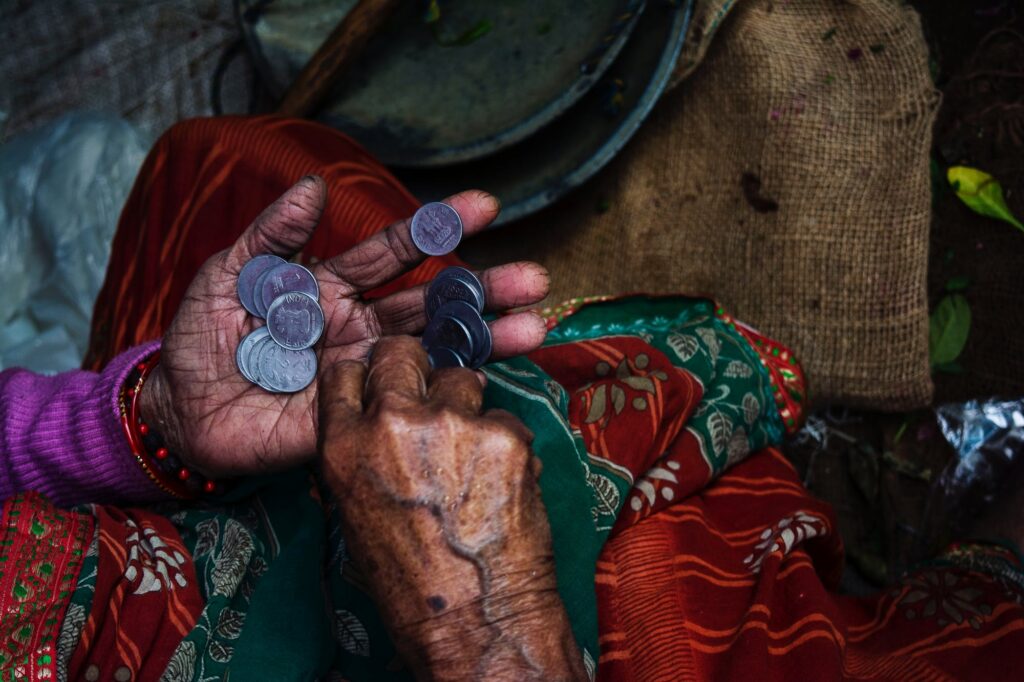
Traditional Wall Decorations of the Bhils and Gonds: Techniques and Symbolism
Wall Art
The Bhils and Gonds have retained the tradition of decorating the walls of their houses and this activity has its roots in the cave dwelling traditions of their ancestors. The walls of their huts are decorated with colours or symbols. Mud huts have provided an attractive surface for decoration. This flat surface has always been an inspiration for the artists. The mud wall can be used for wall decorations on wet and dry surfaces. Clay and cow dung is the most commonly used material for making walls in villages. Men complete the structure and ceiling of the house. Women are responsible for Clay kneading, making the wall, plastering of mud and decoration. The women have kept folk art alive in its true sense in the villages. The skill of painting (wall and canvas) was believed to be a divine gift made to a woman, essentially a married one, a Suhagin. As both, marriage and painting, represented fertility, a Suhagin alone could accomplish a painting. In all ages, one Suhagin, or another, was found claiming the blessing of a female divinity, usually Parvati, in her dream and gifting to her the skill to paint and giving her an understanding of reeti – convention, and knowledge of cosmic laws.
Technique of Wall Decoration
Wall decoration is a lengthy procedure. They cover the base work of the walls with a coat of wattle and smear it several inches deep. For this purpose, the women dig red clay which is mixed with the chaff and husks of Kode. The clay needs to be thoroughly kneaded. Thick plaster of mud is applied smoothly by hand; this entire work is free-hand and requires great skill and planning. The mud should be damp throughout the process. The mud plaster is applied after making the patterns. The coating of the wall is left to dry for a day or more than that. Finally, a thin coating with a mixture of fresh cow dung and soft white clay diluted in water is applied and left to dry completely. This needs to be renewed once a year and Diwali is generally the time chosen for this. The layout of Wall decoration is of two types –
- One or two forms are made at one or two places and the major portion of the wall remains plain. This form is generally found in the centre of the wall by the side of the door case or around niches and windows. The single form is human, animal or in the form of motifs.
- The entire wall is decorated into successive frames and each panel of frame is the part of the main composition of the wall.
The woman artist surveys and plans the area of the wall that needs to be decorated and begins by making a simple frame around it. These frames are simple lines or bars, occasionally enhanced with raised scrolls or incised chevrons or bone patterns. If the frame is a large one it may be elaborated with a large variety of motifs, single or double wavy lines, loops with small projections around the belly. The area may then be further divided into panels by broad bars enhanced with geometric motifs. The objects to be portrayed are plastered within the frame or panels, generally on a slightly lower relief than the outer surrounding lines. These decorations have two aspects –either purely decorative or the establishment of gods, goddesses, religious and magical motifs. The decorative patterns are based on geometrical forms like circles, triangles, dots, crosses, parallel lines and wavy lines. Birds and animals are depicted. The most common animals depicted are deer, rabbit, lion, elephant, horse, peacock, bull & snake. Human figures are drawn without much detail. The most significant decoration is that of successively raised frames at two or three levels. The gods and goddesses are represented symbolically. These days some of the Hindu deities like Lord Hanuman, Lord Ram and Laxman, Radha, Lord Krishna, Lord Ganesha & Goddess Durga are found in a naturalistic style while the tribal gods and goddesses are developed in symbols. The representation of clan gods, magical forms and signs of lightning are some of the important issues of decoration. Men and horses of geometric construction are randomly spaced across the walls. Such paintings are done during the rainy season and on festive occasions and bear a close resemblance to those found in the painted rock shelters of Pachmarhi and Bheem Bhetika. Presently, the wall paintings in their houses, as in the great majority of rock paintings, are executed in red and yellow pigments prepared from hematite or other iron oxides. The white pigment was made from limestone or kaolin, while mixtures of pigment that produce pinks are also found to be used in paintings. These paintings are executed in a number of stylistic conventions: some, particularly the older ones, are only sketches or constructs of lines, while others, the more recent ones, are silhouettes filled with colours and embellished with decorative designs.